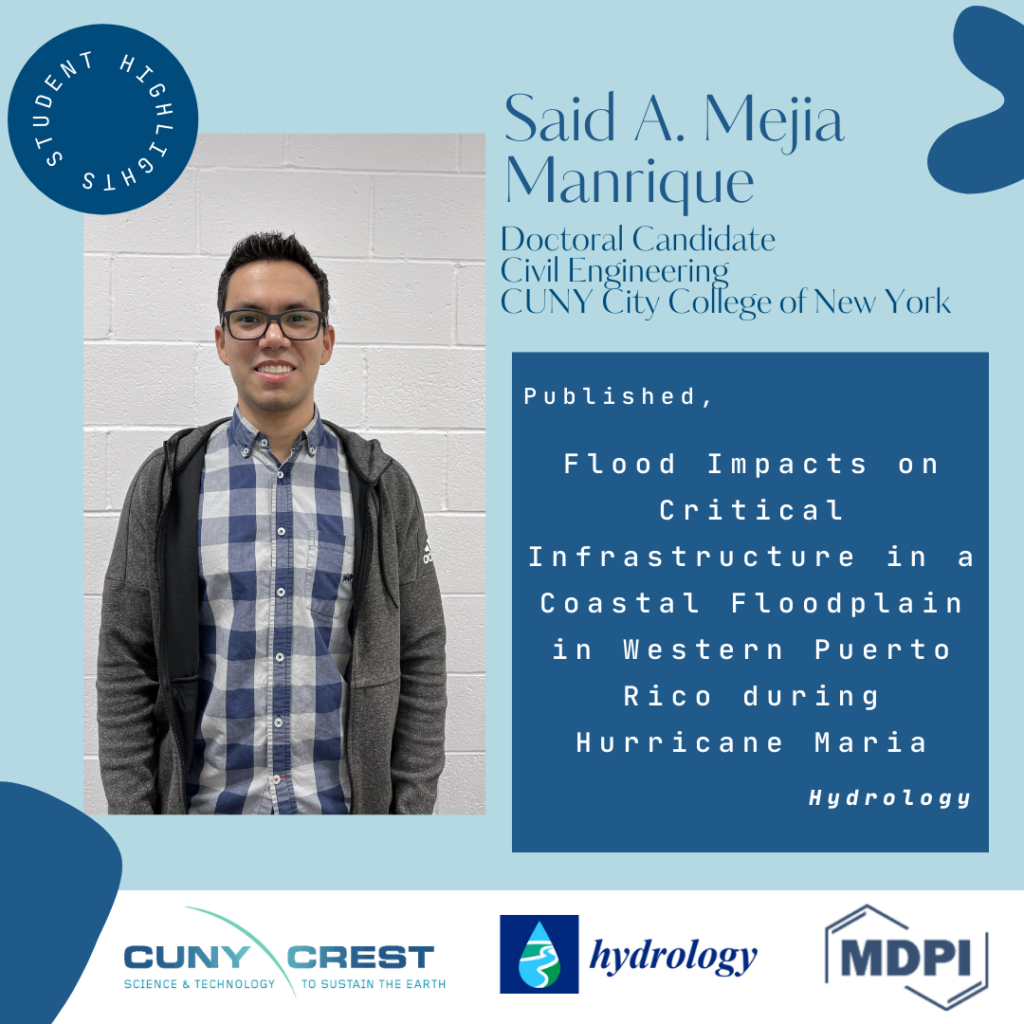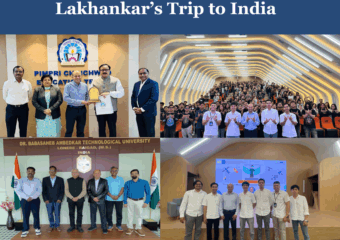Student Highlights: Said A. Mejia Manrique
Student Highlights: Said A. Mejia Manrique published a paper in Journal of Hydrology on, “Flood Impacts on Critical Infrastructure in a Coastal Floodplain in Western Puerto Rico during Hurricane Maria”
Said A. Mejia Manrique received the B.S degree in Civil Engineering from Pontificia Universidad Javeriana, Bogotá, Colombia. He is currently a Doctoral Candidate in the Department of Civil Engineering at the CUNY City College of New York under the supervision of Dr. Reza Khanbilvardi. His research interest includes simulating water distribution models and identifying the critical water infrastructure that might be affected by flooding through hydrologic models with the aim of improving the resiliency of the water infrastructure in islanded communities focusing in Western Puerto Rico in a National Science Foundation (NSF) project. Said is planning to work with the Puerto Rico Aqueduct and Sewer Authority (PRASA) for 2 months in order to analyze and validate the water distribution model and propose improvements on it. In addition, Said has been teaching assistant of Civil Engineering Data Analysis and Hydraulic Engineering classes, and instructor of the Octave course for the High School Initiative in Remote Sensing of the Earth Systems Engineering and Sciences (HIRES) as a part of the CUNY CREST Institute.
In the summer of 2021, Said published the scientific article, “Flood Impacts on Critical Infrastructure in a Coastal Floodplain in Western Puerto Rico during Hurricane Maria” in Hydrology. This article was written alongside co-authors Dr. Eric W. Harmsen, University of Puerto Rico-Mayaguez, Reza M. Khanbilvardi, Executive Director of the CUNY CREST Institute at the CUNY City College of New York, and Jorge E. González, CUNY City College of New York.
Brief Synopsis of “Flood Impacts on Critical Infrastructure in a Coastal Floodplain in Western Puerto Rico during Hurricane Maria” by Said A. Mejia Manrique, Eric W. Harmsen, Reza M. Khanbilvardi and Jorge E. González
One of the most extreme weather events to negatively impact large groups of people is flooding. Flooding during Hurricane Maria directly caused sixty-four deaths. The Gridded Surface Subsurface Hydrologic Analysis (GSSHA) was developed as a way of creating a model that can simulate flooding from extreme weather events and evaluate its impact on infrastructure and communities. The flooding that occurred during 2017 as a result of Hurricane Maria was utilized as the case study for Said’s article. Three main methods were used to simulate flooding in the coastal floodplain during Hurricane Maria: (1) Use of hydrograph from the upper watershed, along with the Weather Research Forecast (WRF) rainfall in the coastal flood plain; (2) Use of WRF rainfall to simulate runoff in the upper watershed and coastal flood plain; (3) Use of bias-corrected WRF rainfall to simulate runoff. Using GSSHA, critical infrastructures were evaluated in the simulations such as public schools and water and electrical infrastructures. It was ultimately determined that water infrastructures were more severely impacted than electrical infrastructure. It was concluded that the developed model “can be used with sufficient accuracy to identify infrastructure affected by future flooding events” (Manrique 2021).
Reference:
Mejia Manrique, S. A., Harmsen, E. W., Khanbilvardi, R. M., & González, J. E. (2021). Flood Impacts on Critical Infrastructure in a Coastal Floodplain in Western Puerto Rico during Hurricane María. Hydrology, 8(3), 104.




